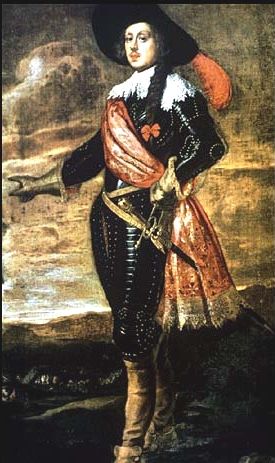
Mattias de’ Medici (1613-1667) was the son of Cosimo II de’ Medici.
In 1630 he became Governor of Siena, where he lived for most of his life.
Fascinated by engraving, he collected works by Stefano della Bella, Giulio Parigi and Giuliano Periccioli and was himself an amateur engraver.
He encouraged artistic interchange between Florence and Siena and collected ivory objects of vertu and glassware.
Between 1632 and 1639 Mattias was in Germany, where he fought in the crucial battles of the Thirty Years War (1618–1648). In 1644, as a reward for military victories in the War of Castro (1641–1644), his brother Ferdinando II de’ Medici presented him with the villa of Lappeggi, near Florence.
His interest turned to painting, and he paid for the training of Livio Mehus, many works by whom are listed in the inventory of Mattias’s possessions made in 1669. A soldier, he was particularly interested in battle painting, and Giacomo Cortese, who, like Mattias, had experienced military combat, was employed by him in the 1650s. Baldinucci stated that Mattias delighted in the vivid naturalism of Courtois’s four paintings of battles in which the Prince had fought. Two sets of such paintings have been identified, four pictures on canvas and four frescoed battle scenes in a room in the villa of Lappeggi. This room also contains a damaged fresco, which may be identified as Victory and Fame by Baldassare Franceschini, described by Baldinucci.
In his country residence Mattias gathered a collection of paintings that included, among many landscape and battle paintings, works by Astolfo Petrazzi, Raffaelle Vanni, Giovanni Domenico Cerrini and Giacinto Gimignani.
